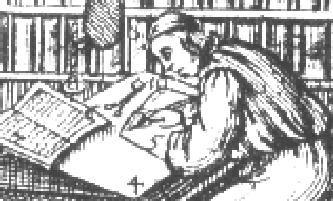 |
Text Encoding Initiative |
7. Notes |
All notes, whether printed as footnotes, endnotes, marginalia, or elsewhere, should be marked using the same element:
- <note>
- contains a note or annotation. Attributes include:
- type
- describes the type of note.
- resp
- indicates who is responsible for the annotation: author, editor, translator, etc. The value might be author, editor, etc., or the initials of the individual who added the annotation.
- place
- indicates where the note appears in the source text. Sample values include inline, interlinear, left, right, foot, and end, for notes which appear as marked paragraphs in the body of the text, between the lines, in the left or right margin, at the foot of the page, or at the end of the chapter or volume, respectively.
- target
- indicates the point of attachment of a note, or the beginning of the span to which the note is attached.
- targetEnd
- points to the end of the span to which the note is attached, if the note is not embedded in the text at that point.
- anchored
- indicates whether the copy text shows the exact place of reference for the note.
Where possible, the body of a note should be inserted in the text at the point at which its identifier or mark first appears. This may not be possible for example with marginalia, which may not be anchored to an exact location. For simplicity, it may be adequate to position marginal notes before the relevant paragraph or other element. Notes may also be placed in a separate division of the text (as end-notes are, in printed books) and linked to the relevant portion of the text using their target attribute.
The n attribute may be used to supply the number or identifier of a note if this is required. The resp attribute should be used consistently to distinguish between authorial and editorial notes, if the work has both kinds; otherwise, the TEI header should state which kind they are.
<p>Collections are ensembles of distinct entities or objects of any sort. <note place="foot" n=1> We explain below why we use the uncommon term <mentioned>collection</mentioned> instead of the expected <mentioned>set</mentioned>. Our usage corresponds to the <mentioned>aggregate</mentioned> of many mathematical writings and to the sense of <mentioned>class</mentioned> found in older logical writings. </note> The elements ...</p>
<lg id="RAM609"> <note place="margin">The curse is finally expiated</note> <l>And now this spell was snapt: once more</l> <l>I viewed the ocean green,</l> <l>And looked far forth, yet little saw</l> <l>Of what had else been seen —</l> </lg>
Up: Contents Previous: 6. Marking Highlighted Phrases Next: 8. Cross References and Links
Date: (revised October 2004) Author: Lou Burnard (revised SPQR).
Copyright TEI 1995